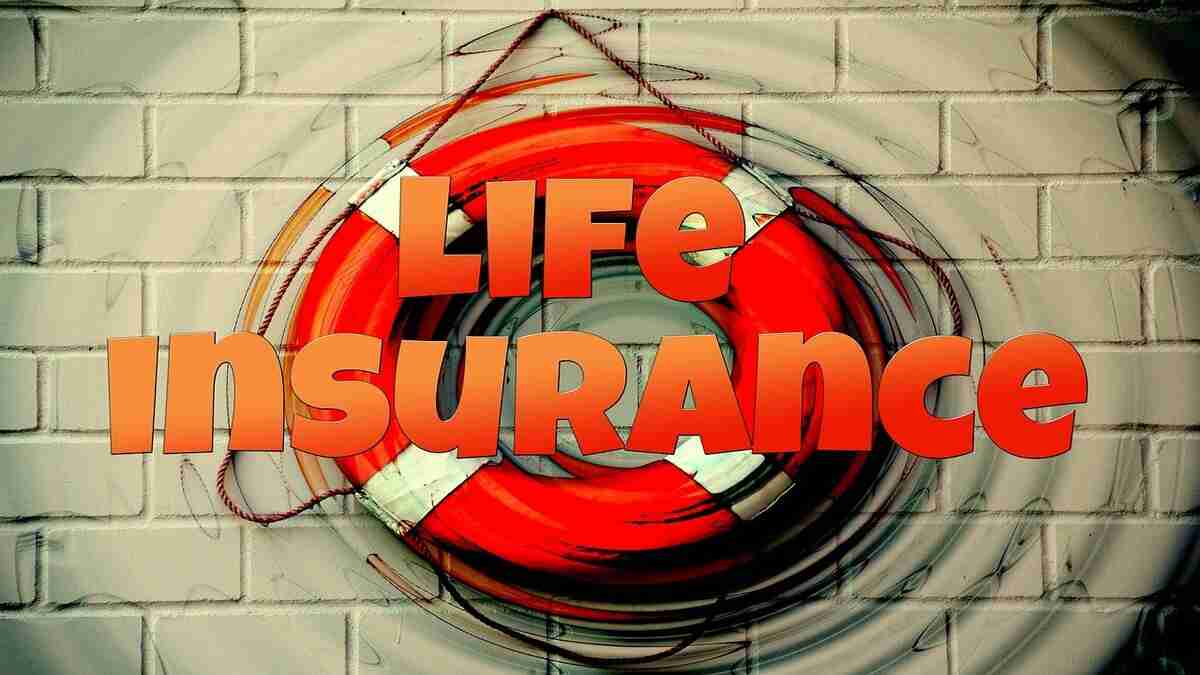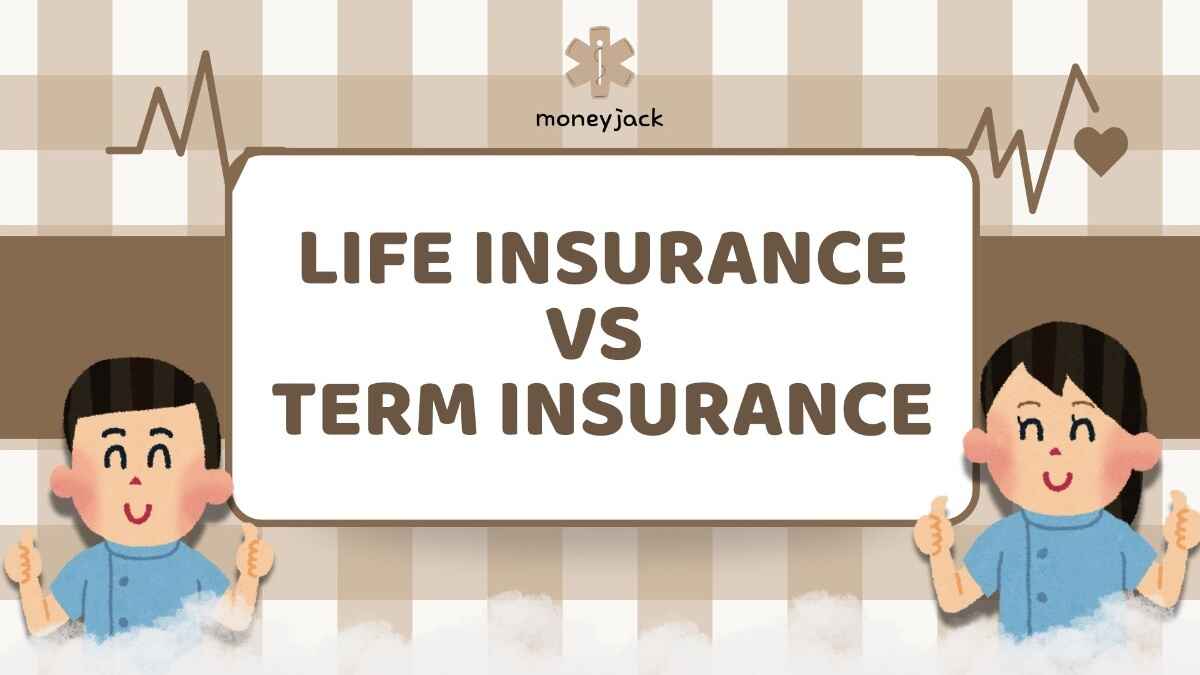Introduction
Life insurance is a vital financial tool that ensures your loved ones are protected in case of an untimely event. In India, where financial planning is gaining importance, choosing the right insurance plan is crucial. Two of the most common options are term insurance and whole life insurance, often referred to as life insurance in this context. While both aim to provide financial security, they differ significantly in their structure, benefits, and suitability. This article explores Life Insurance vs Term Insurance: Key Differences to help you make an informed decision tailored to your needs, especially for an Indian audience. We’ll cover their features, advantages, disadvantages, and include FAQs to address common queries.”Life Insurance vs Term Insurance Key Differences”
Table of Contents
What is Term Insurance?
Term insurance is a straightforward life insurance product that provides coverage for a specific period, known as the term, typically ranging from 5 to 40 years. If the policyholder passes away during this period, the insurance company pays a death benefit to the nominated beneficiaries. If the policyholder outlives the term, the policy expires without any payout, unless it includes a return of premium option.
How Term Insurance Works
When you purchase a term insurance policy, you select the coverage amount (sum assured) and the term. For example, a 30-year-old non-smoker in India can get a ₹1 Crore term insurance policy for as little as ₹818 per month for a 30-year term (source: Policybazaar). You pay regular premiums, and if you pass away during the term, your beneficiaries receive the sum assured, either as a lump sum or in installments, depending on the policy.
Benefits of Term Insurance
- Affordability: Term insurance offers high coverage at low premiums, making it accessible for young professionals and families.
- Simplicity: It’s easy to understand, with no complex investment components.
- High Sum Assured: You can get large coverage amounts, like ₹1 Crore or more, at budget-friendly rates.
- Tax Benefits: Premiums are eligible for tax deductions under Section 80C, and death benefits are tax-free under Section 10(10D) of the Income Tax Act, 1961.
Examples of Term Insurance Plans in India
Popular term insurance plans in India include:
- HDFC Life Click 2 Protect Super: Offers coverage up to age 85 with flexible premium payment options (source: HDFC Life).
- ICICI Pru iProtect Smart: Provides comprehensive coverage with critical illness riders.
- Max Life Smart Secure Plus: Known for high claim settlement ratios (99.51% in FY 2023-24).
What is Whole Life Insurance?
Whole life insurance provides coverage for the policyholder’s entire life, as long as premiums are paid. Unlike term insurance, it doesn’t expire after a set period, ensuring lifelong financial protection. Additionally, it includes a cash value component, where a portion of the premium builds a savings fund that grows over time.
How Whole Life Insurance Works
When you buy a whole life insurance policy, you pay fixed premiums, part of which goes toward coverage and part toward building cash value. This cash value grows tax-deferred and can be accessed through loans or withdrawals. For example, a 35-year-old might pay ₹20,902 per month for a ₹1 Crore whole life policy (source: Policybazaar). Upon the policyholder’s death, beneficiaries receive the death benefit, which may be reduced if loans are outstanding.
Benefits of Whole Life Insurance
- Lifelong Coverage: Ensures protection for your entire life, ideal for long-term planning.
- Cash Value: Acts as a savings vehicle, offering financial flexibility for emergencies or retirement.
- Fixed Premiums: Premiums remain constant, aiding in budgeting.
- Tax Advantages: Cash value growth is tax-deferred, and loans/withdrawals are often tax-free.
Examples of Whole Life Insurance Plans in India
Some popular whole life insurance plans in India include:
- LIC Jeevan Utsav: Offers lifelong coverage with guaranteed additions (source: LIC).
- HDFC Life Sanchay Plus: Combines savings and protection with guaranteed returns.
- SBI Life Smart Wealth Builder: Provides market-linked returns with lifelong coverage.
Life Insurance vs Term Insurance: Key Differences
Understanding Life Insurance vs Term Insurance: Key Differences is essential for choosing the right plan. Below is a detailed comparison based on key parameters:
| Parameter | Term Insurance | Whole Life Insurance |
|---|---|---|
| Coverage Duration | Specific period (5-40 years) | Lifelong, up to age 100 or as long as premiums are paid |
| Premiums | Lower, e.g., ₹818/month for ₹1 Cr cover for 30 years (30-year-old) | Higher, e.g., ₹20,902/month for ₹1 Cr cover (35-year-old) |
| Cash Value | No cash value, pure protection | Builds cash value, can be borrowed or withdrawn |
| Investment Component | None, premiums solely for coverage | Includes savings component with guaranteed or market-linked returns |
| Death Benefit | Payable only if death occurs during term | Payable upon death, may reduce due to loans |
| Maturity Benefit | Generally none, except for return of premium plans | Payable if policyholder survives to maturity (e.g., age 100) |
| Flexibility | Less flexible, coverage ends after term | More flexible, cash value can be accessed |
| Suitability | Ideal for temporary needs (e.g., mortgage, child education) | Suitable for lifelong coverage, estate planning, wealth creation |
| Cost | Affordable, high coverage at low cost | Expensive due to lifelong coverage and savings component |
| Loan Benefit | Not available | Available against cash value |
Detailed Comparison
- Coverage Duration: Term insurance is temporary, covering specific periods like 10 or 20 years, while whole life insurance provides lifelong protection, often up to age 100.
- Premiums: Term insurance premiums are low and may increase upon renewal. Whole life insurance premiums are higher but fixed, ensuring predictability.
- Cash Value: Term insurance offers no cash value, focusing solely on protection. Whole life insurance builds cash value, which grows over time and can be used for financial needs.
- Investment Component: Term insurance has no investment feature, while whole life insurance acts as a savings tool, offering guaranteed or market-linked returns.
- Suitability: Term insurance suits those needing high coverage for specific periods, like young families. Whole life insurance is ideal for those seeking lifelong security and wealth creation.
Advantages and Disadvantages
Term Insurance
Advantages:
- Affordability: Low premiums make it accessible, e.g., ₹16/day for ₹1 Cr cover for an 18-year-old (source: Policybazaar).
- Simplicity: Easy to understand with no investment complexities.
- High Coverage: Offers large sum assured at low cost, ideal for financial protection.
Disadvantages:
- Limited Duration: Coverage ends after the term, leaving you uninsured if not renewed.
- No Cash Value: No returns if you outlive the term, unless you opt for a return of premium plan.
- Renewal Costs: Premiums can increase significantly upon renewal, especially at older ages.
Whole Life Insurance

Advantages:
- Lifelong Protection: Ensures coverage for your entire life, ideal for dependents with special needs.
- Cash Value: Provides a savings component that can be accessed for financial needs.
- Tax Benefits: Cash value grows tax-deferred, and loans are often tax-free.
Disadvantages:
- High Cost: Premiums are significantly higher, which may strain budgets.
- Complexity: Involves investment components that may be hard to understand.
- Lower Returns: Returns on cash value are often lower compared to other investments like mutual funds.
Which One Should You Choose?
Choosing between Life Insurance vs Term Insurance: Key Differences depends on your financial situation, goals, and life stage. Here are factors to consider:
1. Age and Life Stage
- Young Individuals: Term insurance is ideal for young professionals or parents with dependents, offering high coverage at low cost during earning years.
- Older Individuals: Whole life insurance suits those nearing retirement or seeking lifelong coverage for estate planning.
2. Financial Goals
- Protection Focus: If your goal is to secure your family’s financial future during specific periods (e.g., until children are independent), term insurance is sufficient.
- Wealth Creation: If you want to build savings alongside protection, whole life insurance offers a cash value component.
3. Budget
- Limited Budget: Term insurance is more affordable, making it suitable for those with tight finances.
- Higher Budget: Whole life insurance is viable if you can afford higher premiums for lifelong benefits.
4. Need for Liquidity
- Short-term Needs: Term insurance is ideal if you don’t need access to cash from your policy.
- Long-term Needs: Whole life insurance provides cash value for emergencies, education, or retirement.
5. Long-term Planning
- Temporary Obligations: Term insurance suits needs like paying off a mortgage or funding education.
- Estate Planning: Whole life insurance is better for leaving a legacy or supporting dependents with lifelong needs.
Scenarios for Term Insurance
- A 30-year-old with a young family and a home loan can opt for a 20-year term plan to cover the loan period.
- A sole breadwinner can choose a high sum assured to ensure family security during working years.
Scenarios for Whole Life Insurance
- A high-net-worth individual planning their estate can use whole life insurance for lifelong coverage.
- Parents of a child with special needs can opt for whole life insurance to ensure financial support after their lifetime.
FAQs
What is the main difference in Life Insurance vs Term Insurance: Key Differences?
Term insurance covers a specific period, while whole life insurance provides lifelong coverage.
Which is cheaper, term insurance or whole life insurance?
Term insurance is significantly cheaper, offering high coverage at low premiums compared to whole life insurance.
Does term insurance have any cash value?
No, term insurance focuses on protection and does not build cash value, unlike whole life insurance.
Can I convert term insurance to whole life insurance?
Some term policies offer a conversion option to whole life insurance without a medical exam, typically within a specified period (source: Investopedia).
Is whole life insurance a good investment?
Whole life insurance offers guaranteed cash value growth but typically provides lower returns compared to other investments like mutual funds.
What happens if I stop paying term insurance premiums?
The policy lapses, and no benefits are paid, as there’s no cash value to fall back on.
What happens if I stop paying whole life insurance premiums?
The policy may convert to a reduced paid-up policy, or you can surrender it for the cash value, though surrender charges may apply.
Can I get a loan against term insurance?
Generally, no, as term insurance lacks a cash value component.
Can I get a loan against whole life insurance?
Yes, you can borrow against the cash value, often tax-free.
Which is better for a limited budget?
Term insurance is ideal for those with limited budgets due to its low premiums and high coverage.
Conclusion
In the debate of Life Insurance vs Term Insurance: Key Differences, both options serve distinct purposes. Term insurance is a cost-effective choice for those needing high coverage for a specific period, such as during working years or until financial obligations are met. Whole life insurance, with its lifelong coverage and cash value component, is suited for those seeking long-term security and wealth creation. By evaluating your budget, life stage, and financial goals, you can choose the plan that best aligns with your needs. For personalized advice, consult a financial advisor to ensure your decision supports your family’s future.
Disclaimer: Moneyjack.in provides general financial information for educational purposes only. We are not financial advisors. Content is not personalized advice. Consult a qualified professional before making financial decisions. We are not liable for any losses or damages arising from the use of our content. Always conduct your own research.
